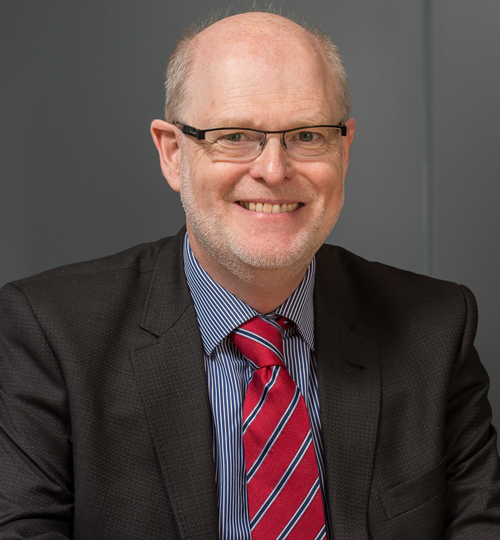At the edge of what’s possible

The Carrier Strike Group (CSG) has some truly formidable and cutting-edge technology on board – and like life, it’s evolving. We caught up with to Paul Gosling, Chief Technology Officer at Thales UK, to talk about his involvement with CSG and his search for the next generation of game-changing technologies. We also spoke about his own involvement with CSG and the fascinating potential of quantum.
Can you give us a brief description of your role as Chief Technology Officer for Thales UK?
I’ve been with Thales for 31 years and in the CTO role for the last 18 months. Put simply, my job is to keep an eye on the next generation of technology – AI, autonomy, the shift to digitally oriented systems, connecting systems and their data, quantum technologies – and where it’s going to take us. In effect, things beyond the norm of what we can do today. Many of the platforms we work on have life-cycles lasting decades, so a lot of what you fit on them on day one is not what’s on there when they’re de-commissioned. So, they need to be designed so they can evolve and take advantage of new technologies and systems.
So, your role involves part planning for the future and part predicting it?
Indeed. My team and I are responsible for identifying game-changing technologies and how we can get them working and mature enough to apply them to the areas we work in for the benefit of our customers. We also look for cross-cutting opportunities to take some of our defence innovations into the civil world. A great example of this is the MIMRee project where we’re repurposing our autonomous mine warfare systems and sensing technology from periscopes to repair off-shore wind turbines. Fixing these huge machines far out to sea is a dangerous job – getting it done using autonomous sensors and robots is far safer.
What advantage does Thales UK’s technology bring to the Carrier Strike Group?
Many of the sensor systems we provide are cutting-edge and enable CSG to see and hear further than potential adversaries. If your systems are more sensitive and more capable at detecting things before everyone else, then you have an advantage. It's as simple as that. We also led the design of the QEC itself, its power and propulsion system, and the integrated platform management system. On the group of ships and submarines escorting the QEC, we provide the integrated comms, electronic warfare systems, sonars, radars and the optronic submarine masts. In many ways, we’re the eyes and the ears of CSG.
Earlier you mentioned “quantum” being a technology, you’re looking at. Can you tell us a bit more?
As a Doctor of Physics, this field fascinates me and the potential impact of quantum computers, quantum sensors, quantum communications and so on, is absolutely mind-boggling. Take a radar sensor, for example. If you use traditional methods you might improve performance during its lifetime by a factor of two, or even four. But apply quantum principles at an atomic level and you could improve performance by a factor of 10,000.
The sensors we build right now are very capable, because they might have a life-cycle of 20, 30 or 40 years. This means one of the biggest challenges we face is processing data using the compute power we have available at any point in a platform’s lifecycle. Upwards of 80% of a submarine’s compute power is used to crunch the data coming through the sensors, so we need to be right at the cutting-edge of what’s feasible to achieve the best possible performance. To put it in context, the computer we developed to process the data in one of our early submarine sensors, would have ranked in the world’s top 10 supercomputers available at the time.
What’s been your personal involvement with Carrier Strike?
When I first joined Thales I worked on the architecture and design of Sonar 2076, the system on the submarines that protect HMS Queen Elizabeth and the CSG, as well as the Technical Director on Sonar 2087 for the Type 23 frigate, which has a similar protective role. I’ve also contributed to the external peer review of the QEC during its design.
Have you been on board the HMS Queen Elizabeth?
Sadly, not while at sea (though I have been on sea trials of our sonars on various platforms over the years). I remember how impressive it was standing underneath her in the dry dock and looking up at this gargantuan 65,000 tonne vessel above me. Equally impressive was the cross-industry consortium – Thales, Babcock, BAE Systems, the MoD, and our collective supply chains – that worked so closely together to take the project from the drawing board to the oceans of the world.
Lastly, what three words would you use to describe her?
That’s easy. Great. British. Engineering.


